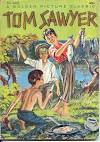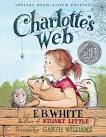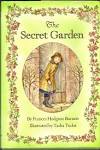1. Quality Clearness
Children may not be ready to drop their jaws at a beautiful bit of prose describing the lifting of fog on a summer morning. That is not to say that children's writers shouldn't worry about the quality of their prose. Their prose should be tip top so that adult readers can enjoy while children subconsciously soak quality writing into their spongy little brains. However some children aren't quite ready to appreciate delightful prose for the sake of delightful prose. So save the paragraph describing a yellow geranium's perfect shape and colour for your adult book (on second thought, maybe just save it for your nature journal. Yeah, that might be best.) Juvenile prose should be clean, simple, and to the point.
2. Go On An Adventure.
The awesome thing about kids is that they have so little experience. Your story about a girl from Mongolia may be the first time a child hears of nomads living in tents. Your story about a girl growing up in the depression may take a child to a world she or her could never have imagined. Kids love adventures, so show them something they've never seen before and make it interesting. The best part is that you don't have to make anything up. You can use the world around you, introducing children to realities they have never touched before. I remember how fascinated I was with the idea of nuclear power and radiation after I read a book about a girl whose family takes in a couple of Chernobyl refugees. I'd never heard of Chernobyl before. That book wasn't spectacular; I don't remember the plot, the characters, or anything particularly beautiful about it. But it took me places I'd never been before and expanded my world, for that reason I will never forget it.
I really love the way Richard Robinson (president and CEO of Scholastic Inc.) described this principle at a NYC children's publishing conference: "A great book is...One that makes the world seem larger and more interesting."
3. Don't Talk Down.
Nobody likes to feel stupid. Of course there is a fine balance here. Most ten year olds don't read Charles Dickens simply because they just can't handle Dicken's vocabulary, prose, thematic elements etc. quite yet... But don't underestimate children. Have you ever heard of Fancy Nancy by Jane O'Connor? Yeah, I am talking about a wildly popular series of picture books aimed at preschoolers that use words like "iridescent" and "delectable." Kids have this thing called curiosity that empowers them to want to learn and stretch themselves. So don't dumb down your characters, themes, or stories. Be age appropriate, but not stupid. As long as you are using clear and understandable prose, you can go to deep places and children will happily follow.
Think deep but simple. If the reader can tell your an adult writing down to kids, your doing something wrong. Children's stories should create a level field of understanding. Remember that you are writing to an equal, not someone who is less than you.




4. Teach Don't Preach.
I remember early reviewing the first book in the Fish Finelli series about a year ago. It was an interesting story with great characters and ALMOST all the elements of a wonderful Children's novel. Yet at the end I was left unsatisfied. What was the point? That little boys can lie to their parents, steal, sneak into other peoples houses and then gain a huge treasure out of the whole adventure? I am not saying that your characters must be perfect little peaches. That is totally boring and kids won't buy it (see principle #3. Cough cough, Elsie Dinsmore). But remember Tom Sawyer? Though the story seems to follow a naughty boy's misadventures, there are plenty of strong moral lessons hidden away. In the end, Tom Sawyer is much less selfish then when it all began ( although he doesn't lose any of his original spunk). There is no need to yak a lesson about keeping our rooms clean. But great books have deeper messages that leave your soul feeling warm and fuzzy after you close the back cover.




5. Characters Are King.
While children may not be ready for Dickensian prose, they certainly are ready for Dickensian level characters ( minus the prostitutes and other sketchiness of course). From the time kids pop out of the womb, they begin to learn about people. Kids are drawn to fun, unique, and well developed characters, just as much as adults are. Use all effort lost in not being about to spend paragraphs on exquisite descriptions, pool it together, and thrust it into creating amazing characters. The best children's novels (in my opinion) are based on strong (not overly simplified) characters.
5. Characters Are King.
While children may not be ready for Dickensian prose, they certainly are ready for Dickensian level characters ( minus the prostitutes and other sketchiness of course). From the time kids pop out of the womb, they begin to learn about people. Kids are drawn to fun, unique, and well developed characters, just as much as adults are. Use all effort lost in not being about to spend paragraphs on exquisite descriptions, pool it together, and thrust it into creating amazing characters. The best children's novels (in my opinion) are based on strong (not overly simplified) characters.
Resources:
Five Principles in Good Children's Novels from Scholastic CEO:
Fancy Nancy Principles:

No comments:
Post a Comment